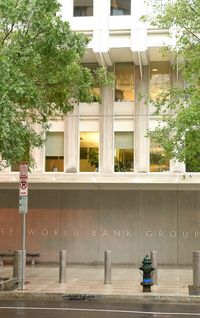While some degree of rowing back on easing measures is anticipated, just how and when the US authorities will act remains uncertain, although the repercussions will be felt far and wide
If the US stock market could talk, it might have been heard to scoff “Pandemic? What pandemic?” in the early summer of 2021. Since then, however, confidence has taken something of a knock.
In mid-March, exactly 12 months after Covid-19 began to reduce the Western world to apoplexy, the S&P 500 was at 3,900. By the beginning of August it had reached 4,400, and by the first week in September it had gained another 100 points
But the August jobs report tarnished the gold a little: an increase in the nonfarm payroll of over 600,000 had been predicted, yet it grew by only 235,000. The August CPI reading was only 0.1%, the lowest since February. By mid-September, the S&P was back to 4,300.
“The market got way too bullish on growth, the pandemic, vaccinations. Everything came to a head. It’s now striking a balance between optimism and pessimism,” said Drausio Giacomelli, head of emerging markets research at Deutsche Bank.
Federal Reserve chair Jerome Powell has stressed the importance of growth and employment rather than inflation in the bulk of his public comments. “Other Fed presidents have been much more focused on inflation and he has been much more focused on unemployment,” said Chris Flanagan, fixed income strategist at Bank of America.
The fact that his initial period of office ends next year and he could be replaced by the executive is also likely to increase his dovishness, suggest market watchers. Powell has said he wants to stay on, but the expiry of his term will be seen by many Democrats as an opportunity to appoint a new chair and one perhaps more likely to further the aims of the administration. If Powell wants to continue, he cannot step too far out of line.
The Fed is also thought to be looking at the labour force participation rate in addition to nonfarm payrolls. This is an important metric, and at the moment it is still well below where it was before the onset of Covid-19. At the end of 2020, for example, it was trending at a little over 63.5% and is now still well below that figure at 61.7%. In early 2020, it touched 60% – the lowest level by far seen in the last two and a half decades.
However, at the press conference following the FOMC meeting at the end of September, and in his least elliptical comments about tapering to date, the chairman suggested that the economy is now strong enough to begin reducing asset purchases in November. This is broadly in line with what the market had been expecting, and a key tenet of Powell’s reign of office has been to give the market what it expects and not to spring any nasty surprises.
Currently, the Federal Reserve is buying US$80bn of Treasuries and US$40bn of mortgage-backed securities every month. This is expected to be reduced by US$10bn of Treasuries and US$5bn of MBS per month, so that by the third quarter of 2022 the process should be complete and quantitative easing will be over. Since the Fed recommenced large-scale purchase to deal with the pandemic, the balance sheet has grown to about US$8trn, up from around US$4trn at the end of 2020.
One might have thought that the prospect of the end of such a large programme would have spooked the Treasury market, but so far it has taken it its stride. This is partly because Powell has learned from the mistakes of one of his predecessors, Ben Bernanke, and has been at pains to avoid a repeat of the taper tantrum of 2014.
As Steven Zeng, senior US rates strategist at Deutsche Bank, said: “The Fed has signalled it will taper for a long time and it has stressed the criteria which will cause it to taper. It has been very consistent with its language.” Those investors that needed to make adjustments in their portfolio to cope with tapering will have already done so."
Flexible approach
Powell’s Federal Reserve has become known for its flexibility and retention of optionality as well. The market feels reassured that if conditions were to suddenly change, the Fed would not simply doggedly stick to its plans but would be comfortable ordering a swift about-face and recommencing asset purchases.
Moreover, there is a good argument to be made that the market has already had its taper tantrum. As vaccination fever swept through the market at the beginning of the year, asset prices began to look dangerously overheated and inflation was on everyone’s lips. The 10-year Treasury backed up from 93bp at the beginning of the year to 1.75% by the middle of March. “The market got ahead of the Fed. It’s now in the rear view mirror," said Flanagan.
The effect of the taper is also likely to be mitigated by a reduction of coupon sales by the Treasury. In early August, it announced it could pare the supply of government debt in November as the pandemic relief measures ease. Though it will still raise US$126bn in the third quarter, it said it expects to propose “an initial set of auction size reductions as soon as the November refunding announcement”.
With a US$1trn infrastructure spending package recently passed by Congress and another US$3.5trn Build Back Better spending bonanza perhaps looming, it may appear odd that the Treasury can afford to cut issuance. But these two programmes – if the second is passed – will be financed over time, while during the pandemic it needed money immediately. And even if coupon issuance is cut next year, it is not as if the Treasury is setting an example of Calvin Coolidge frugality. It borrowed about US$3trn last year and will equal that amount in 2021.
The planned taper could be thrown off course by failure to increase the debt ceiling. This at the moment lies in the lap of the gods who sit on Capitol Hill. Powell took the opportunity to warn of the dire consequences if the debt ceiling is not increased. A US default would have a seismic effect on world markets and that would not be the time to reduce asset purchases.
Assuming this gets sorted out – as generally happens in these cases, and the taper does commence in November – there is still consensus that Treasury yields will back up. To what extent is less certain. The 10-year has rallied back to around 1.35% by mid-September, and Deutsche Bank believes the yield will be in the 2.25%% region by year-end – a significant sell-off.
Bank of America, however, while it did earlier this year suggest a 2% handle on the 10-year by the end of 2021, in the light of the recent rally now suggests a yield of 1.55%–1.60%. There are several factors to be considered in plotting the likely path of Treasury yields in the remainder of the year.
On the one hand, the debt ceiling has deprived the front end of the Treasury market of supply and investors that normally buy short-end securities – particularly banks – have been pushed further out along the curve. Quarterly filings have revealed that banks extended duration during the first quarters of this year.
Foreign central banks have also been pushed further along the curve for the same reasons. Technical factors have disconnected the Treasury curve from fundamentals. “We think rates are anywhere from 30bp to 50bp too low right now,” said Zeng.
On the other hand, there are a lot of unknowns still out there. All the Covid-related stimulus programmes and debt forbearance schemes come to an end in September, and the future is uncertain.
“We do think bonds sell off but only modestly. There are a lot of reasons to be positive but there are a lot of causes for caution. Evictions can start again. Will we have one million homeless on the streets? Unemployment benefits are ending. Will people hunker down?” asked Flanagan.
In these conditions, Jerome Powell’s love of optionality is perhaps justified, especially as any repercussions are fely way beyond home shores.
Scary new world
The ripples of Ben Bernanke’s taper tantrum were felt across the globe. It brought the major relocation from overleveraged developed markets to emerging market assets that had occurred in the wake of the financial crisis to a juddering halt.
Would a rise in US yields and, by extension, a strengthening of the dollar have the same effect this time round? Analysts say this is unlikely for a number of reasons. First, the 2013 taper was accompanied by a drop in oil prices, which accelerated the rush for the doors out of emerging market assets.
Second, the dollar is already at the high end of its range and there is much lighter positioning in emerging market instruments than was the case eight years ago. Third, Bernanke’s tapering signified a major policy shift which caught everybody off guard.
None of these factors applies today.
However, the tail risks to EM asset remain considerable. The vast scale of public borrowing over the last year has shifted the equation. The new normal for debt ratios very GDP in developed markets is 110%–120% it seems, not the 80%–90% of the pre-Covid world. In the far-off days of budgetary surplus in the late 1990s, it was only 55%. We are in uncharted waters, and the hypothesis that an economy can bear this without inflation is untested.
The low rate experiment may have to end and end abruptly. This goes beyond tapering.
“What concerns me is that six months from now inflation is at 3.5% and the Fed is talking about raising rates substantially and the curve inverts. This is a global recession in the making and will deliver a structural shock that will hurt EM the most,” said Deutsche Bank's Giacomelli.
To see the digital version of this report, please click here
To purchase printed copies or a PDF of this report, please email gloria.balbastro@lseg.com





























